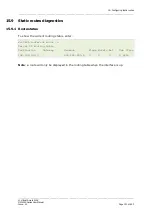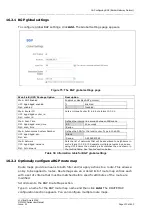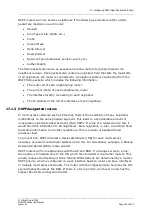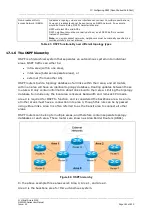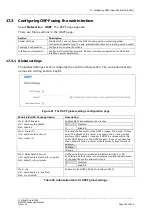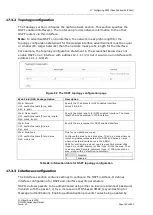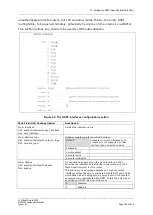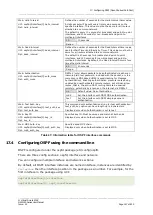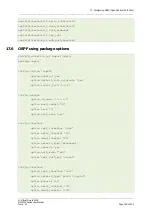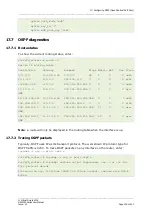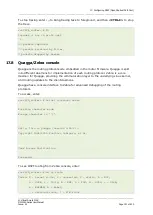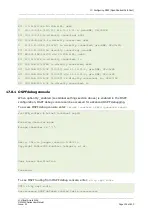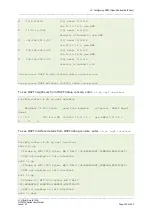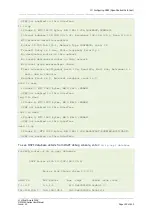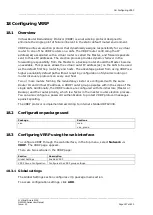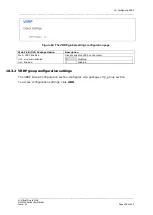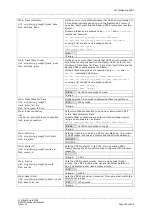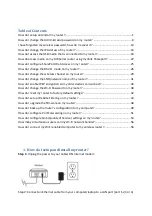
17: Configuring OSPF (Open Shortest Path First)
_______________________________________________________________________________________________________
_______________________________________________________________________________________________________
© Virtual Access 2018
GW2020 Series User Manual
Issue: 2.1
Page 145 of 423
17.3.2
Topology configuration
The Topology section configures the ospfd network section. This section specifies the
OSPF enabled interface(s). The router can provide network information to the other
OSPF routers via this interface.
Note: to advertise OSPF on an interface, the network mask prefix length for the
topology configuration statement for the desired interface advertisement must be equal
or smaller (IE. larger network) than the network mask prefix length for the interface.
For example, the topology configuration statement in the screenshot below does not
enable OSPF on an interface with address 12.1.1.1/23, but it would on an interface with
address 12.1.1.129/25.
Figure 82: The OSPF topology configuration page
Web Field/UCI/Package Option
Description
Web: Network
UCI: ospfd.@network[0].ip_addr
Opt: ip_addr
Specify the IP address for OSPF enabled interface.
Format: A.B.C.D
Web: Mask Length
UCI: ospfd.@network[0].mask_length
Opt: mask_length
Specify the mask length for OSPF enabled interface. The mask
length should be entered in CIDR notation.
Web: Area
UCI: ospfd.@network[0].area
Opt: area
Specify the area number for OSPF enabled interface.
Web: Stub Area
UCI: ospfd.@network[0].stub_area
Opt: stub_area
Only for non-backbone areas.
Configure the area to be a stub area. That is, an area where no
router originates routes external to OSPF and hence an area
where all external routes are via the ABR(s).
ABRs for such an area do not need to pass AS-External LSAs
(type-5s) or ASBR-Summary LSAs (type-4) into the area. They
need only pass Network-Summary (type-3) LSAs into such an
area, along with a default-route summary.
0
Disabled.
1
Enabled.
Table 46: Information table for OSPF topology configuration
17.3.3
Interfaces configuration
The Interfaces section contains settings to configure the OSPF interface. It defines
interface configuration for OSPF and interface specific parameters.
OSPFv2 allows packets to be authenticated using either an insecure plain text password,
included with the packet, or by a more secure MD5 based HMAC (keyed-Hashing for
Message AuthentiCation). Enabling authentication prevents routes being updated by

